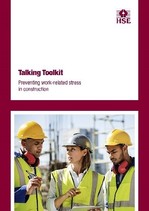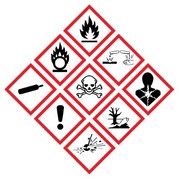 Developed with the help of industry stakeholders, HSE has published a Work-related Stress Talking Toolkit for the construction sector. Starting the conversation is an important first step in preventing work-related stress, and the toolkit will help to do that. This is the first time HSE has produced something specifically for the construction industry on work-related stress. The industry has introduced its own initiatives to help promote positive mental health and support those in need. The new toolkit builds on this work and is a key part of a wider approach to managing mental health on construction sites. The toolkit is primarily aimed at small and medium sized businesses with a regular workforce (employed and contracted) who wish to be proactive in addressing this issue. However, it is a flexible tool that can be used across the whole industry. Download the Talking Toolkit (PDF) and find out more about work-related stress. |  The legal framework in GB continues to ensure standards of protection for those working with hazardous substances are maintained. The Control of Substances Hazardous to Health (COSHH) Regulations 2002 set out requirements to protect workers from health risks associated with exposure to hazardous substances in the workplace, and workplace exposure limits (WELs) form part of the COSHH regulations. HSE will continue to review and introduce new WELs and is developing a long-term delivery model for GB. The GB model will continue to include a review of scientific data, evidence and economic analysis. Independent expert advice will be sought, and we will continue to consult with stakeholders on any new or revised limits to be introduced in GB. Whilst we embed our GB approach, we will continue to consider, and apply as appropriate, limits set under the EU regime that are significant to GB. You can find further information in our free publications on WELs and COSHH. | Starting in May 2021, HSE will be seeking the views of a wide range of stakeholders about the Control of Asbestos Regulations 2012. This exercise is part of a second post implementation review (PIR) of the regulations, following the first PIR published in 2017. The review will seek to establish if the regulations continue to meet their objectives, remain appropriate and are still the best means to minimise exposure to asbestos. The exercise, using an online survey, will open in late May. Look out for further details next month. HSE has published a range of coronavirus related guidance and information, to help you keep your workplace COVID-secure, including: Keeping workplaces safe as restrictions are eased
Our signposting page covers the government's roadmap out of lockdown in England and gives advice on returning to work safely. It also explains which restrictions are not changing and provides details from other government departments on requirements not enforced by HSE, such as: - face coverings
- workplace testing
- NHS Test and Trace
- vaccinations
Examining and testing equipment Equipment stored or unused for long periods of time should be checked for damage or deterioration. We have updated advice on thorough examination and testing of equipment as restrictions are eased. Legionella Water system stagnation can occur due to lack of use where buildings or facilities have been closed or had reduced occupancy during the pandemic, increasing the risks of Legionnaires' disease. See our guidance on managing legionella risks. Ventilation and air conditioning Adequate ventilation (including air conditioning) can help reduce risk of spreading coronavirus in workplaces. For all the latest information and advice visit our coronavirus microsite. Updated HSE guidance for gig economy, agency and temporary workers The way people work is changing, so employers need to think differently about how to keep workers healthy and safe. Our guidance for employers includes an overview of why employers should take account of gig economy, agency and temporary workers. This is supported by guidance for workers, which sets out their responsibilities and how their employer should protect them. There are also links to relevant advice for specific sectors, including construction. Construction Leadership Council Strategy 2021 The Construction Leadership Council (CLC) has set out its mid-term strategy in the CLC Strategy 2021. The strategy sets out more detail on: - vision and strategic priorities
- the CLC's delivery plan
- how the CLC works
- how the industry can get involved
In particular, the strategy sets out one-year and three-year plans against its priority themes, focused on Building Safety and the Race to Net Zero Carbon. In order to provide a safe learning environment, some of our most popular courses and events are now available live online. Find out more and see the full schedule here. Upcoming courses/events include: Asbestos Links for further guidance and information: Cancer and construction: Asbestos CDM 2015 Links for further guidance and information: CDM 2015 – What do I need to do?, Planning for construction work and Principal contractors: roles and responsibilities Mobile plant Links for further guidance and information: Mobile elevating work platforms Demolition Links for further guidance and information: Demolition Work at height Links for further guidance and information: Working at height, Assessing all work at height and Lifting operations |
No comments:
Post a Comment